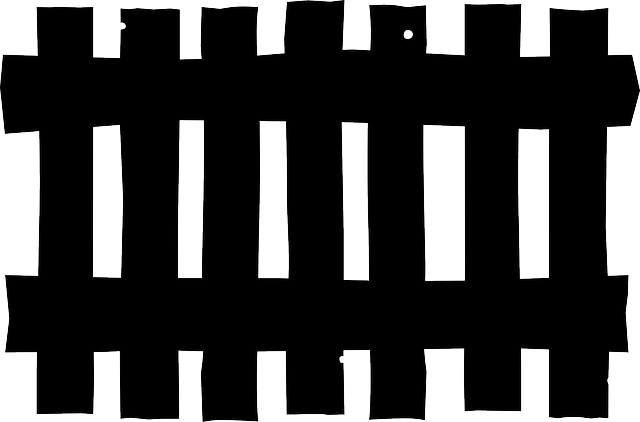Large properties present unique challenges when it comes to fencing, often requiring durable, cost-effective solutions that can span vast distances. This article explores strategies to meet these specific needs, delving into alternative materials and designs that offer both strength and savings without compromising quality. We’ll guide you through the process from understanding your property’s requirements to maintenance tips, ensuring your fence stands the test of time while enhancing your space’s aesthetic appeal and value.
- Understanding Fencing Needs for Large Properties
- Traditional Fencing vs Cost-Effective Alternatives
- Durable and Low-Maintenance Materials
- Design Options to Enhance Property Value
- Installation Tips for Longevity and Safety
- Maintenance Strategies for Long-Lasting Fences
Understanding Fencing Needs for Large Properties
Large properties present unique challenges when it comes to fencing, as the scale and diverse landscapes require tailored solutions. Understanding the specific needs is paramount before investing in any fencing solution. The primary considerations include security, privacy, aesthetics, and functionality. Each aspect demands a strategic approach due to the vast areas involved.
For instance, securing large properties often necessitates robust and durable fences that can withstand potential intrusions. Privacy becomes a key focus, prompting homeowners to opt for tall, solid barriers or creative designs that seamlessly blend with the natural surroundings. Moreover, since large properties often feature diverse terrain, flexible fencing options that adapt to inclines and irregular shapes are essential.
Traditional Fencing vs Cost-Effective Alternatives
Traditional fencing methods have long been the go-to option for property boundaries, offering privacy and security. However, for large properties, the costs can be substantial due to the extensive materials and labour required. This often leads landowners to seek more cost-effective alternatives that still meet their security needs.
Fortunately, the market offers several modern solutions that are both affordable and highly functional. These alternatives use innovative materials and designs to provide robust barriers while significantly reducing expenses. From vinyl and wood composite fences to chain link and electric fencing systems, these options cater to various budgets and security levels, making them ideal for large-scale applications.
Durable and Low-Maintenance Materials
When considering fencing for large properties, opting for durable and low-maintenance materials is a practical choice. Modern fencing solutions now offer a range of options that can withstand harsh weather conditions while requiring minimal upkeep. For instance, vinyl fences are incredibly popular due to their resilience against rot, rust, and damage from vehicles or wildlife. They come in various styles and colors, allowing for customization to match any property aesthetic.
Another excellent choice is aluminum fencing, known for its lightweight yet robust construction. This material is highly resistant to corrosion and requires almost no maintenance besides an occasional wash. Its strength makes it suitable for wide areas, and it can be designed to fit complex landscapes without compromising structural integrity.
Design Options to Enhance Property Value
When considering fencing for large properties, design options play a crucial role in enhancing property value. Fences don’t just serve as boundaries; they can become elegant focal points that reflect your personal style and attract potential buyers. Incorporating unique features like curved lines, custom gates, or intricate latticework not only adds visual appeal but also communicates a sense of sophistication and attention to detail.
Think beyond traditional wood or vinyl. Modern fencing materials offer a range of options, from stylish metal panels to eco-friendly composite woods. These materials can withstand harsh weather conditions, require less maintenance, and often come in various colors and textures, allowing you to create a distinctive look that complements your property’s architecture and landscape design.
Installation Tips for Longevity and Safety
When installing fencing for large properties, ensuring longevity and safety should be paramount. Begin by assessing the terrain; uneven ground may require specialized posts or additional support to prevent listing. Properly prepare the site by removing debris and marking out the fence line accurately. This step is crucial for aligning your fence with existing structures or natural features.
Use high-quality materials suitable for outdoor exposure, especially in harsh climates. For longer-lasting results, consider treating wooden posts and rails with preservatives to protect against rot and insect damage. Ensure all hardware, such as brackets and fasteners, is secure and made from rust-resistant materials. Regular inspection and maintenance, including tightening connections and repairing any damage promptly, will extend the life of your fence and maintain its safety integrity.
Maintenance Strategies for Long-Lasting Fences
Regular maintenance is key to ensuring your fence remains sturdy and durable, especially for large properties with extensive fencing. A simple cleaning routine can go a long way in preventing damage caused by debris, insects, and harsh weather conditions. Using mild soap and water, gently clean the fence to remove any dirt or grime accumulation. This practice not only keeps the fence looking neat but also helps to identify potential issues early on.
Additionally, applying a fresh coat of paint or sealant every few years can protect the fence from rust and UV damage. For wooden fences, treating them with a water-repellent sealer annually will prevent warping and rot. Metal fences benefit from a regular inspection for signs of corrosion, which can be treated promptly to avoid structural weaknesses. These simple yet effective maintenance strategies will contribute to the longevity of your fencing system.
